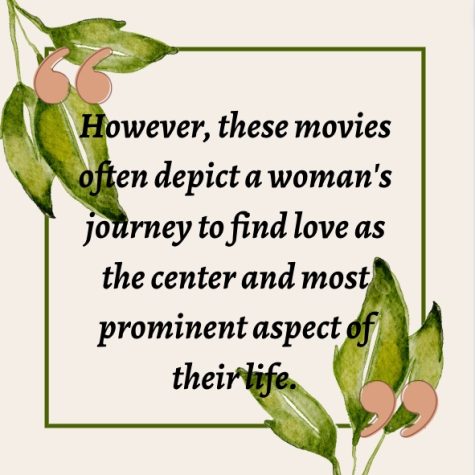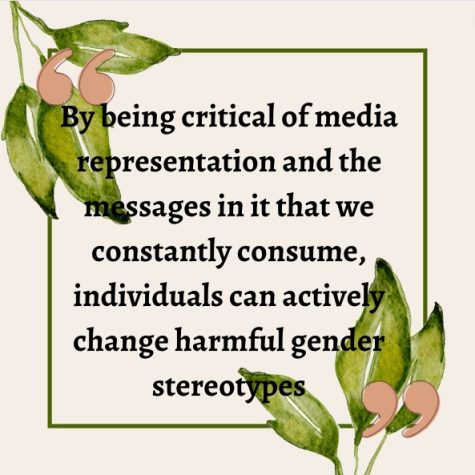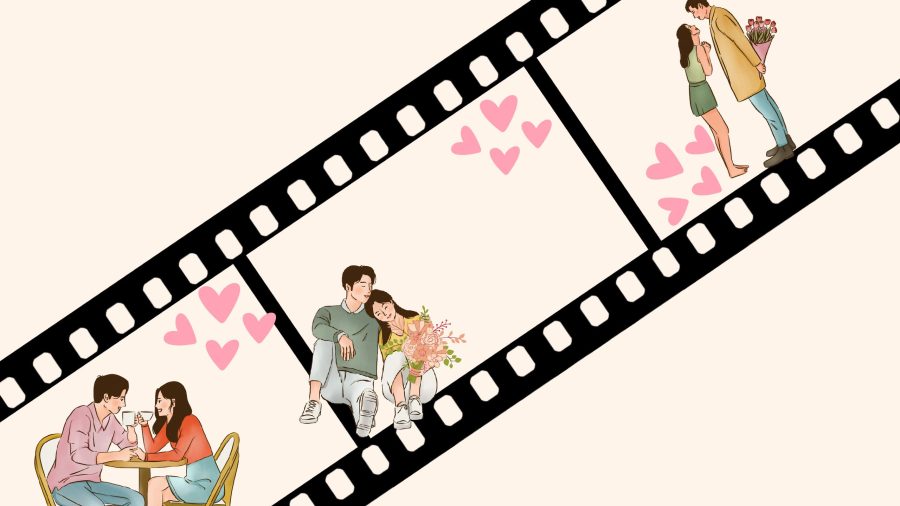The Notebook of Gender Stereotypes: An Analysis of Chick Flicks
Exploring how chick flicks reinforce gender roles
Rom Com’s are often watched to get in the spirit of Valentines Day
February 4, 2023
We often get into the spirit of Valentine’s day by binge-watching chick flicks. These films feature characters who are single at the start, but soon after meeting someone charming and suitable for them, their lives seem to take a turn for the better. Iconic lead actresses such as Julia Roberts, Sandra Bullock and Rachel McAdams entertain us as they journey toward finding love against all odds.

However, these movies often depict a woman’s journey to find love as the center and most prominent aspect of their life. They suggest that a woman’s worth and happiness are dependent on their romantic relationships. Within these movies, women are often portrayed as overly emotional and dependent on men, reinforcing harmful stereotypes about women and the patriarchal societal expectation that women should prioritize finding a romantic partner and getting married. These examples are present in movies like “The Notebook,” “He’s Just Not That Into You” and “Miss Congeniality.”
The well-known chick flick “27 Dresses” is a particularly clear example of these stereotypes. This movie revolves around Jane (played by Katherine Heigl), a character who has always found herself as a bridesmaid to her friends and never a bride herself. The movie reinforces the societal expectation that females’ only goal in life is to settle down rather than pursue their aspirations. Jane constantly sacrifices her needs and desires for others, never doing anything for herself — perpetuating the idea that women are passive and selfless. Marriage is portrayed as the main goal for the women in the movie, while the men are shown as uninterested in their relationships, showing more importance to their careers. Representation in chick flicks is limiting as women are reduced to one-dimensional stereotypes, with the female lead characters being defined by their appearance and relationships. There’s often a lack of nuanced representation of women contributing to the reinforcement of gender roles, biases and expectations for women in society.
Unfortunately, the media we’ve been consuming has also led to women putting up with poor behavior from men, because, in the movies, it always works out in the end. We’ve romanticized and normalized manipulative behavior, as it’s assumed that if you love a person enough, they will change for you. Romanticization leads to young girls internalizing these stereotypes and stifling their growth as their perspective is limited.
The gender stereotypes on the screen, pushing the idea that a woman’s worth is tied to her relationship status have deeper impacts. According to a report by the United Nations, films and TV play a major role in molding cultural perspectives and opinions on gender and are critical in changing the discourse for gender equality. A study by Common Sense Media shows that gender roles in TV shows and movies influence how kids view relationships, career choices and their own self-worth.
Recently, there has been more effort to have more inclusive representation of women, such as chick flicks “Plus One,” “Always Be My Maybe,” “The Half of It” and “Crush.” These movies break the mold by featuring diverse female leads where the plot points aren’t only focused on the romance aspect and instead give the characters a more nuanced personality.

By being critical of media representation and the messages in it that we constantly consume, individuals can actively change harmful gender stereotypes. Understanding the ways in which media representation perpetuates limiting gender. By paying attention to these messages, we can work towards promoting gender equality in media and society. Acknowledging the influence of media is the first step towards creating a more diverse and inclusive representation of women in media. Increasing representation in movies and TV will help create more authentic and diverse representation in media. This can serve as inspiration for young girls, and seeing women in positions of power can counteract limiting ideas that might have been pushed at them in the past.

















